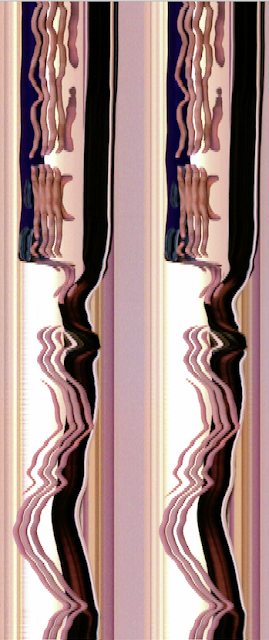Code10 - From Slitscan to Pixel Sorting and Beyond
In the ever-evolving world of digital art, there's always something new to discover. Today, I'm excited to take you on a journey through some of my favorite digital art techniques and experiments. From the classic slitscan to the mesmerizing world of pixel sorting, let's dive into the limitless possibilities of digital creativity.
Slitscan: Simple, Yet Limitless
Slitscan photography has been a long-time fascination of mine. This technique, which involves capturing a moving image through a narrow slit over time, creates stunning visual effects that never cease to amaze me.

Scanner Experiments
Video Slitscan
Taking the concept further, I've also explored video slitscan. Here's an example that I'm particularly fond of:
The way it transforms movement into abstract, flowing patterns is truly mesmerizing.
Pixel Sorting 101
Moving from slitscan to another fascinating technique: pixel sorting. This process involves rearranging pixels in an image based on specific criteria, often creating striking glitch-like effects.
Sorting and Animating
One of my favorite applications of pixel sorting is animating pixels based on their color value. The result is a dynamic, ever-changing image that seems to flow and morph before your eyes.
Obey: A Pixel-Sorted Stimulation
I applied this technique to one of my favorite stimulations, which I call "Obey." You can see the original version here. The pixel-sorted version adds a new dimension to the piece, creating a sense of fluid motion and instability.Seen Unseen: Program Static Animation
In an attempt to recreate the feel of those intriguing static animations often sold on street corners, I created "Seen Unseen." This project explores the intersection of static images and subtle animation.
Moire Animations
As part of this project, I created a webpage hosting moire animations. The text "Once seen, cannot be unseen" flickers and shifts, playing with the viewer's perception.
Animated Textures with Tan Lines
Venturing into the world of trigonometry, I experimented with creating animated textures using tan functions. The resulting "Tan Lines" create hypnotic, wave-like patterns that seem to pulse and breathe.
S for Stars: Endless Simulations
Experiments in Motion
Birthday Boredom Buster
I once surprised (and possibly bored) a friend on his birthday with a personalized animation. It's amazing how a simple algorithm can turn a portrait into a dynamic, moving image. I created a liquify filter effect for a friend named Elie. The result is a fluid, dream-like version of the original image.
Typography Experiments
"I See You See Me"
In what I playfully call an "Extremely bad typographic test," I created an animation with the text "I see you see me." It's a tongue-in-cheek dedication to all the stalkers out there, playing with ideas of perception and observation.
Reaction Diffusion: Making Doormats Look Good
The reaction-diffusion algorithm is a personal favorite. It's fascinating how this simple mathematical model can create complex, organic-looking patterns. I've found it can make even a humble doormat look intriguing!
NumBer Noise: A Lost Treasure
Unfortunately, I've misplaced the original code for this piece, but I still have a screen grab. "NumBer Noise" was an interesting experiment in generating visual noise using numerical patterns.
Conclusion
This journey through various digital art techniques is just a glimpse into the vast world of possibilities that digital tools offer to artists. From the simple act of scanning an object to complex algorithms creating stunning visuals, the potential for creativity is truly limitless.
I'm always excited to explore new techniques and push the boundaries of what's possible with digital art. What about you? Have you experimented with any of these techniques? Or do you have a favorite digital art method that I haven't mentioned? I'd love to hear about your experiences in the comments below!
Stay curious, keep experimenting, and remember: in the world of digital art, the only limit is your imagination.





















Comments
Post a Comment